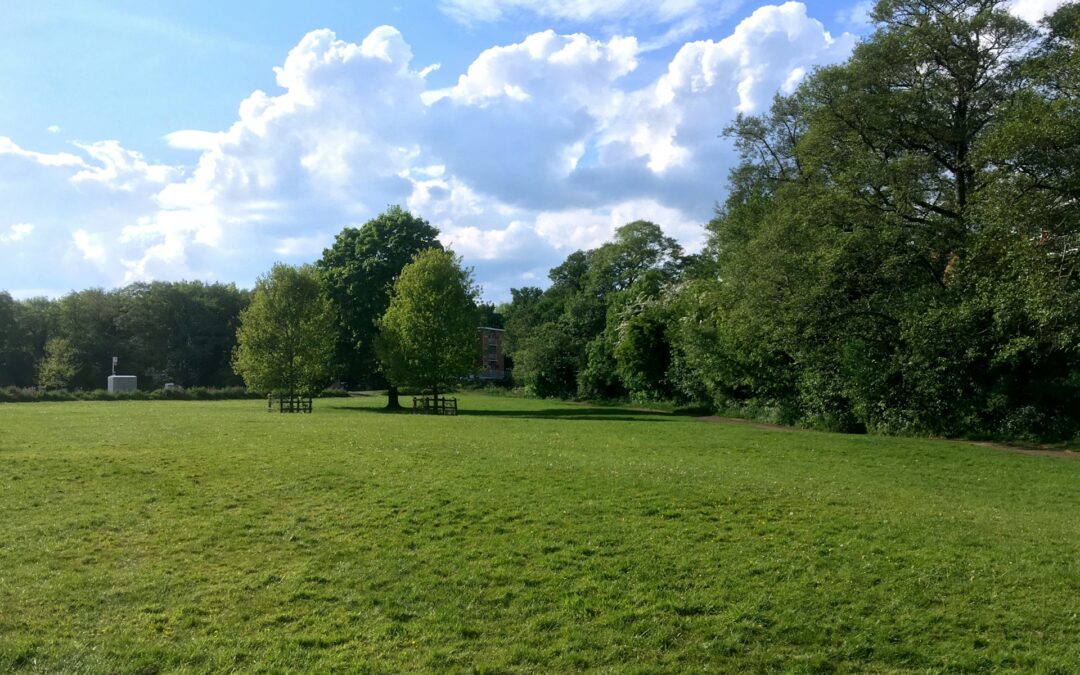Green spaces are essential in urban areas. They offer a refreshing break from concrete buildings and busy streets. In Raleigh, adding green spaces to commercial landscapes can immensely enhance the environment. These areas provide multiple benefits, from aesthetic appeal to improved well-being.
Incorporating green spaces in urban commercial landscapes isn’t just about planting flowers. It’s about designing areas where people can relax and enjoy nature. Trees, shrubs, and flowers can transform a dull space into a vibrant one. These changes can make a commercial property more inviting and pleasant for visitors.
Benefits of Green Spaces in Urban Areas
Green spaces bring many benefits to urban areas. They improve the look and feel of city environments and help communities in various ways.
1. Enhanced Aesthetic Appeal
– Visual Relief: Green spaces provide a visual break from buildings and pavement, making cities more attractive.
– Color and Texture: Plants add color and texture, creating a more pleasing environment.
2. Environmental Improvements
– Air Quality: Plants clean the air by absorbing pollutants and releasing oxygen.
– Temperature Regulation: Green spaces can lower temperatures in urban areas, reducing the heat island effect.
3. Social and Emotional Benefits
– Stress Reduction: Natural settings help people relax and reduce stress.
– Community Gatherings: Green spaces provide areas for socializing and community events.
4. Increased Biodiversity
– Wildlife Habitat: Urban green spaces can host birds, bees, and other wildlife.
– Plant Diversity: A variety of plants in these areas promotes biodiversity.
Design Tips for Effective Green Spaces in Commercial Properties
Creating green spaces in commercial properties requires thoughtful design. Using these design tips, you can create green spaces that are both functional and beautiful, making urban commercial properties more welcoming for everyone who visits.
1. Understand the Space
– Assess the Area: Look at the space’s size, shape, and existing features.
– Consider Usage: Regard how people will use the area, such as for seating, walking, or events.
2. Plan for Accessibility
– Paths and Walkways: Include clear paths and walkways to guide people through the space.
– Seating Areas: Provide benches and seating areas where people can rest and enjoy the scenery.
3. Select Appropriate Plants
– Climate-Suitable Plants: Choose plants that thrive in Raleigh’s climate.
– Low-Maintenance Options: Opt for plants that require minimal care to keep maintenance costs down.
4. Incorporate Water Features
– Fountains and Ponds: Small water features can add a calming effect and attract wildlife.
– Rain Gardens: These can help manage stormwater and provide additional greenery.
5. Use Sustainable Practices
– Native Plants: Use native plants adapted to the local environment.
– Eco-Friendly Materials: Select sustainable materials for elements like benches and pathways.
Choosing the Right Plants for Urban Environments
Selecting the right plants is crucial for creating successful urban green spaces. The plants must thrive in the city environment and require minimal care.
1. Assess Local Climate and Conditions
– Weather Adaptation: Choose plants well-suited to Raleigh’s weather patterns, including hot summers and mild winters.
– Soil Type: Consider the soil type and adjust plant choices accordingly.
2. Select Low-Maintenance Plants
– Native Species: Native plants are adapted to the local climate and typically require less water and care.
– Drought-Tolerant Varieties: Opt for drought-resistant plants to handle dry periods without intensive irrigation.
3. Focus on Diverse Plant Choices
– Mix of Perennials and Annuals: Use a mix of perennials for long-term growth and annuals for seasonal color.
– Shrubs and Trees: Include a variety of shrubs and trees to add height and structure to the landscape.
4. Support Local Wildlife
– Pollinator-Friendly Plants: Incorporate plants that attract bees, butterflies, and other beneficial insects.
– Bird-Friendly Species: Choose berry-producing plants and other species that provide bird food and shelter.
By carefully selecting plants, you can create an urban green space that is both beautiful and sustainable. Thoughtful plant choices help maintain a vibrant landscape with less effort.
Maintenance Strategies for Urban Green Spaces
Maintaining urban green spaces requires regular care and specific strategies to keep them healthy and appealing. Here are some tips to ensure your green spaces remain beautiful all year.
1. Regular Watering and Irrigation
– Efficient Watering Systems: Install drip irrigation systems to provide consistent moisture while conserving water.
– Scheduled Watering: Establish a regular schedule based on plant needs and local weather conditions.
2. Pruning and Trimming
– Seasonal Pruning: Prune shrubs and trees during their dormant season to promote growth and maintain shape.
– Deadheading Flowers: Remove spent flowers to encourage new growth and maintain a neat appearance.
3. Soil Health Management
– Mulching: Apply mulch to preserve soil moisture, suppress weeds, and improve soil health.
– Fertilization: Natural or slow-release fertilizers provide essential nutrients without overwhelming plants.
4. Pest and Disease Control
– Regular Inspections: Inspect plants regularly for signs of pests or disease. Early detection helps manage problems effectively.
– Eco-Friendly Solutions: Use environmentally friendly pest control methods to protect plants without harming the ecosystem.
5. Seasonal Clean-Up
– Fall and Spring Cleanup: Remove debris, fallen leaves, and dead plants to prepare the landscape for the coming season.
– Winter Protection: Protect plants with appropriate coverings or mulches from winter weather.
By following these maintenance strategies, you can ensure that your urban green spaces stay lush and attractive. Regular care keeps plants healthy and vibrant, enhancing the overall appeal of the landscape.
Conclusion
Integrating green spaces into Raleigh’s urban commercial landscapes offers many benefits. These spaces beautify the area, support environmental health, and improve community well-being. Thoughtful design, intelligent plant choices, and proper maintenance are paramount in creating and sustaining these green areas.
Are you ready to transform your commercial property with beautiful green spaces? Contact Cardinal Landscaping today. Let’s collaborate to design and maintain stunning, sustainable commercial landscapes that enhance your property and delight visitors.

